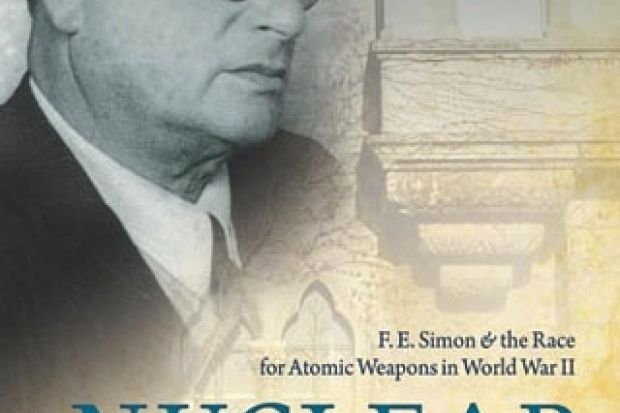According to General Leslie Groves, butt-kicking director of the Manhattan Project, “the contribution of the British [to the venture] was helpful not vital”. Throughout the project, he used the UK’s scientific expertise only when it was essential and he strove to wrap the first weapons in the Stars and Stripes. The strategy worked and, partly in consequence, Britain’s contribution to the making of the first nuclear bombs has been lamentably undervalued.
Among the British scientists whose work on developing these weapons has been largely forgotten is the physicist and chemist Franz Simon, the principal subject of this rewarding new book by his son-in-law, Kenneth McRae, a historian at Carleton University in Ottawa. The problem he and other biographers of Simon have to face is that although he was an outstanding scientist, he made no truly great discoveries, led a blameless life and had hardly any quirks to catch our eye. As far as I know, his only eccentricity stemmed from his intense dislike of the cold – he would sometimes sit through committee meetings wearing a coat, scarf and hat.
Had it not been for Hitler, Simon would have thrived in Germany in the mid to late 1930s as arguably the world’s leading low-temperature physicist. But Nazism made life intolerable for him and his family, and they moved to the UK in 1933, shortly after his 40th birthday. He soon anglicised his first name to Francis and became a British citizen.
Simon was one of the many refugees given sanctuary at the University of Oxford by his friend Frederick Lindemann, head of the Clarendon Laboratory and scientific adviser to Winston Churchill. Terrified that scientists working in Germany, including the brilliant Werner Heisenberg, might be able to build nuclear bombs, Simon and others investigated the viability of such weapons with great thoroughness and urgency. He kept Lindemann closely informed of progress on the project and played a leading role in it, devising an ingenious method of producing large-scale quantities of the rare fissile uranium isotope 235U. After it became clear that the British could not produce the weapon alone during wartime, he became an adviser to the Americans on the Manhattan Project, although he never worked at scientific headquarters at Los Alamos.
McRae uses Simon’s papers and documents made available by the family to shed valuable light on his life, which ended prematurely in 1956, less than a month after succeeding Lindemann as the Dr Lee’s professor of experimental philosophy at Oxford. Death had deprived Simon of achieving his ambition of building a “beautiful big laboratory” to rival the best in the world.
Some parts of the book read like summaries of McRae’s forays into the archives or of Simon’s “vexingly discreet” diary entries. But there is much fascinating detail to be savoured here, including a report Simon wrote after Heisenberg’s visit to the UK in 1948, when Heisenberg told anyone who would listen that he and his colleagues had been well aware of how to make a nuclear weapon but had kept their knowledge from Hitler. Simon was having none of it, and suggested that Heisenberg was deluded, though possibly not actually mendacious.
Nuclear Dawn is much more than a biography of Simon. McRae also gives us well-researched summaries of the nuclear weapons programmes that began independently of the Manhattan Project – in the Soviet Union, Japan and Germany. In the chapter “Why Manhattan?” he explains why the Americans, by dint of excellent organisation and commitment from the top, got the Bomb first, while the Germans lagged way behind. The story might have been different had Hitler invested not in V1/V2 weapons but in the Bomb.
McRae’s book is most likely to be read by scholars, but I hope he succeeds in raising the public profile of his subject and the first British nuclear programme. Most popular books on the early scientific development of the Allies’ nuclear weapons focus so strongly on the Manhattan Project that they underplay the British contributions that did much to get the project off the ground. McRae’s book helps to correct this and illuminates several British nuclear scientists who worked in secret for the government during the war. Posterity has condescended to them for too long.
Nuclear Dawn: F. E. Simon and the Race for Atomic Weapons in World War II
By Kenneth D. McRae
Oxford University Press, 320pp, £35.00
ISBN 9780199687183
Published 20 March 2014
Register to continue
Why register?
- Registration is free and only takes a moment
- Once registered, you can read 3 articles a month
- Sign up for our newsletter
Subscribe
Or subscribe for unlimited access to:
- Unlimited access to news, views, insights & reviews
- Digital editions
- Digital access to THE’s university and college rankings analysis
Already registered or a current subscriber? Login





